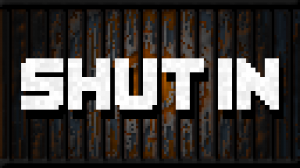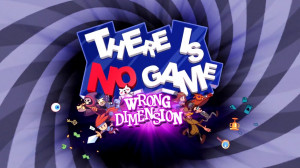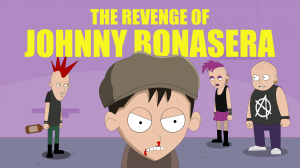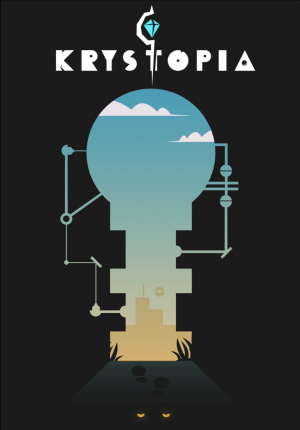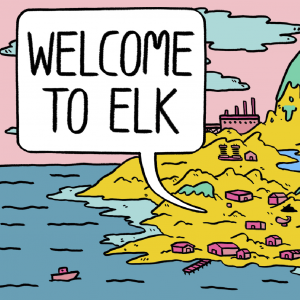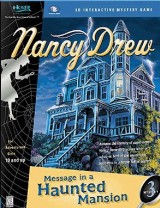Review for Shut In
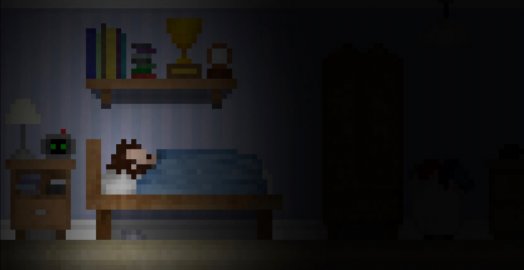
Note: Since time of writing, two major content updates have been released, adding new rooms and puzzles, a streamlined interface and multiple endings. This review is based solely on the original version of the game.
As so many of us have experienced, a pandemic can lead to long periods of being largely confined to our homes, only occasionally venturing outside with eyes blinking blearily at the sun as though we were cave dwellers. This isolation can also be detrimental to mental health, exacerbating conditions such as depression and anxiety, potentially skewing our view of reality and amping up our fears. These are the feelings deftly explored in Shut In, a retro-styled horror adventure game from indie developer Cael O'Sullivan, loosely based on his own first-hand experiences with agoraphobia.
Setting a disturbingly eerie mood from the start, the sound of a heartbeat pulses in the background before text materialises on a solid black background, welcoming you to the game, accompanied by ominous chords and what seems to be the tinkle of pieces of shattered glass falling. As the scene fades in, we see our faceless protagonist, wrapped up snugly in bed. Taking control of the young man, from here your goal is deceptively simple: rouse yourself out of bed, get dressed, make yourself look presentable, and leave the house for a bit of lovely fresh air, all the while urged on by an unseen narrator.
It’s immediately apparent, however, that the narrator, whose harsh yet darkly comedic words appear at the bottom of the screen, might not be entirely on your side. Just a few minutes in, he’s already telling you to change your ‘sweaty’ clothes and in fact insulting you at every turn. Does your breath really stink that bad? Are you so ugly that the shattered mirror in the bathroom is a blessing? And even when you leap to your death at one point, does he really need to jeer at your destroyed corpse by saying it wasn’t a very impressive jump? Although the game doesn’t explicitly state it, this narrator seems to be another version of ourselves; the one that is self-deprecating, the inner voice that berates us and puts us down. “The oven is cold and dark and empty. Remind you of anyone?” Ouch.
As you start to explore the house, it appears to be almost unrecognisable to you, with photographs of people you don’t even know arranged on the shelves. It’s also clear that you’re not in a safe environment and that your home has turned into some kind of death trap. Expect to die in this game. In horrifically brutal ways. Even walking past certain items such as a fizzing lamp will spell your doom unless you take action. In one particularly terrifying scene, black bugs begin to spew out of a tap, eventually filling the room as you desperately try to get out, ultimately eating you alive if you fail to figure out how to open the door.
Once your inevitable death arrives, you’re given the option to save your game (or ‘save me’ as the game eloquently puts it) in one of several available slots and can try again from shortly before you died, so very little progress is lost. Death also comes with a hint displayed, which is sometimes useful and other times not so much (“that is a lot of bugs” didn’t really help me at all).
Your objectives to prepare yourself for going out remain simple, yet still somehow filled with peril given the transformation your abode has gone through. If you make it, (which should take one to two hours depending on how quick you are to solve the puzzles) there are a couple endings to play through. This can be relatively easily achieved by going back to a previous save and making a different choice in a key situation that determines the final outcome. They’re both satisfying enough, if not especially surprising. The narrator even manages to squeeze in some last-minute insults on the ending screen, such is his disdain.
The puzzles are logical, if a little trial-and-error, and provide a decent level of challenge in places due in part to the fact that some are timed, so you’ll be in a state of somewhat desperate panic while you try to piece things together. Often when you enter a room, you’ll be trapped inside until you can puzzle your way out of it. Most of these conundrums are inventory-based; others require selecting the right options provided to you by the snide narrator. For example, should you take the lid off a boiling pot to see what’s cooking? Or rather, how should you remove the lid? The narrator, your destructive inner self, frequently messes with you as you try out various combinations. I mean, you could use this item to try and get out of the front door, but that would be a lot of effort, wouldn’t it? Why bother? Why not just have a snooze instead and worry about it tomorrow?
In terms of looks, Shut In is functionally basic rather than beautiful, with chunky pixel art graphics that don’t particularly stand out amongst other similar games in the genre. That said, the presentation is still effective in establishing the horror. Apart from an aura of light surrounding you, nearly everything is in darkness, contributing to the sense of foreboding ‘wrongness’ about what’s supposed to be your own house. Flipping on the lights can increase visibility a little, but the flickering dimness keeps the atmosphere tense. Scenes are pretty static, other than some simple walking animation as you move around and the occasional glimpse of creepy movement, such as the aforementioned squirming mass of black bugs, or in another panic-inducing sequence, bulbs violently shattering as time passes.
Sound is another aspect put to good use to build dread. Slow, dark and menacing synth chords play in the background, increasing the feeling of creeping dread that heightens ever further the more you explore. Water drips and glugs in the bathroom whilst pipes creak. You hear the protagonist’s heart racing as he climbs down the stairs; or is that the beat of your own heart…? There’s no voice acting, although apart from the narrator there isn’t really any dialogue either, since you’re alone in the house, so it fits the setting.
As you move left and right using the arrow keys in this side-scrolling adventure, you can turn to face items in the background and then interact with them by pressing space (the mouse is not utilised). A controller can be used as an alternative, although that wasn’t tested as part of my playthrough. The information about mechanics are delivered by the same snarky narrator sternly telling you that “you’d better have remembered that. I’m not telling you again.” Thankfully, the narrator will tell you again if you happen to press the wrong key while trying to use an item – although he’ll call you an idiot in the process.
As you walk past certain things, descriptive text sometimes pops up at the bottom of the screen informing you that there’s something to examine, use or pick up. However, there are other spots you can interact with that don’t elicit any handy text to alert you to the fact. Most things can be looked at, though, so it’s best to just to keep investigating everything, provided you’re braced for the occasional death whilst doing so. Escape takes you to the menu screen, where you can peruse your inventory and select an item to carry, which is then displayed in a box in the top left corner of the screen. Hitting shift while holding an item will make the protagonist attempt to use it with whatever he’s near.
Exploring themes of mental illness has certainly been done in games before, but Shut In does it exceptionally well. It’s masterful at evoking feelings of panic; of being trapped; of feeling overwhelmed and frightened in what is supposed to be a safe place for you, your own home. It also offers a glimpse into the everyday struggles to complete basic tasks when suffering from depression – just getting out of bed and brushing your teeth can seem like an insurmountable task. It’s very short even with some repetitive trial-and-error, and it isn’t much to look at from a technical perspective, but even if interpreted as a straight-up horror adventure, it’s well worth experiencing for its skillfully created atmosphere, scathing narrator and rational puzzles.


